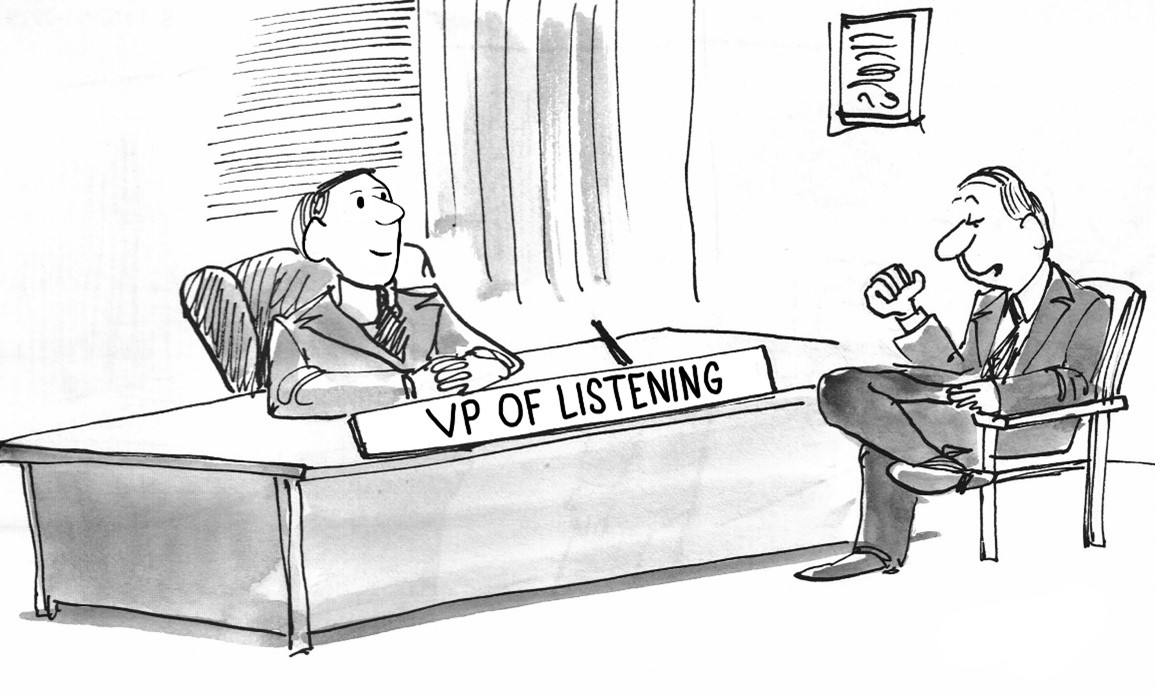
I was once hired by a dental clinic years ago. Numbers had been headed the wrong way (down). Visiting the office, I discovered that no one talked to one another. This was the doctor’s policy. The staff didn’t talk to each other, or to the doctor, and the doctors only talked with the patients. Patient communication was limited, short, and almost brusk.
For about 3 months, I worked with the staff and two doctors to get them together and communicate. No marketing, no policies, no strategies… just gabbing. They got to know each other better. They also discussed issues in the office and started having ideas for improving things.
Also…stats went up!
The doctor was not happy and accused me of not working, just talking! Despite my urging, he didn’t manage by the numbers, just by some old-school idea of working on an assembly line where no one was allowed to talk.
The work ethic of the Industrial Age was that you “clock in,” leave your life behind you, work like a machine for 8 hours, and then “clock out.” You worked at a machine as a machine.
But people aren’t machines.
Minor confusions and then disagreements can accumulate in any relationship. Imagined or real offenses occur. It does in any family, for example. Relationships stiffen when this happens, like a hose in winter with summer’s water frozen.
Relations can be warm and friendly or deteriorate to a cool façade. The internal relationship within the office team ultimately affects both the quality and quantity of the clinic’s performance.
Relationships can be difficult, no doubt. People are complicated, and life is constantly throwing each one of us different curve balls. This is why relationships need regular maintenance. Your family relationships, for example, require time for communication and working things out when there are differences. Planning vacations, reviewing budgets, children’s school and sports activities, and much more takes work.
The same goes with your office family.
A practice is a network of relationships that is created and sustained through communication and service.
I have used this definition for years. I am sure there are other definitions, but this has worked.
This definition applies to your patients. Give them great service, engage in meaningful and empathic communication. They will get better, and they will stay with you longer.
This definition also applies to generating new patients: Expand your network. Get people to know you and how your services can help them.
But this definition also applies to your staff: create and maintain a great relationship with your teammates – and support them.
You must schedule time each week for each other. Staff meetings, training sessions, marketing meetings, lunches, one on one meetings, square dancing (good exercise!) – whatever the venue, make the time to communicate and support each other. This simple act with your staff will help you provide the best service and outcomes to your patients. And help you reach and stay at full capacity.

Keep dancing and …Seize your Future,
Ed
If your practice building efforts aren’t taking you to your goals, there are reasons — many of which are hidden from you.
Find out what they are and how to sail to your next level by getting and implementing my new book, The Goal Driven Business.

 Used to be a popular TV program called Cheers back in the 80’s. It was modeled after a bar in Boston with the same name. As a situational comedy, Cheers presented a familiar group of customers who came to the bar to have a drink, but also to relax, socialize, and have good cheer.
Used to be a popular TV program called Cheers back in the 80’s. It was modeled after a bar in Boston with the same name. As a situational comedy, Cheers presented a familiar group of customers who came to the bar to have a drink, but also to relax, socialize, and have good cheer.
